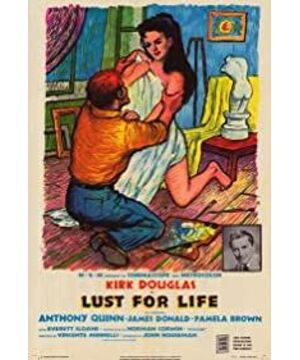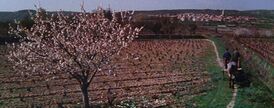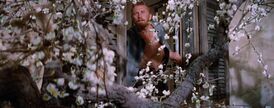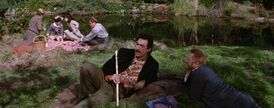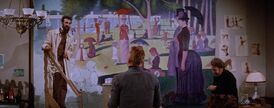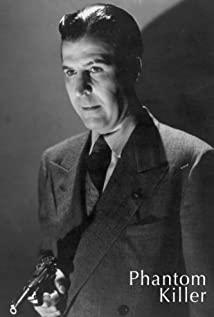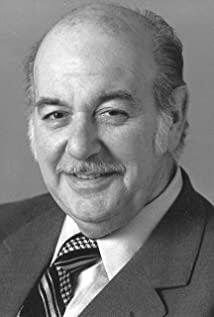The drama about the world-renowned painter Vincent van Gogh (1853-1890), the first of which was The Biography of Van Gogh, co-directed by American directors George Cook and Vincent Minnelli in 1956, and another The Biography of Van Gogh (1992), directed by French director Maurice Piara, is also very famous, showing the end of Van Gogh's life 67 days before his suicide.
Vincent Minnelli and George Cook's "The Biography of Van Gogh", with the most traditional expressive force, pays attention to the oil painting quality of the picture, follows historical facts, and stands from the perspective of macro narrative, and delicately expresses this lonely and painful person. A painter who is dedicated to the arduous process of painting as he painted "Sunflower".
Kirk Douglas's performance is vivid and pure, and the expressive power is appropriate and mellow, which is really rare. Those hungry and sad eyes are unforgettable, and the hand clenching the paintbrush seems to be able to wring out green juice. Anthony Quinn, who played Gauguin, won the Academy Award for Best Supporting Actor.
Dutch Van Gogh, before he aspired to become a painter, used to be a salesman in a gallery, and then worked as a miner in a Belgian mine. After several emotional failures, he began to try to become a painter. Van Gogh's sympathetic character allowed him to live in harmony with the poor miners and paint their miserable lives with a brush. His paintings are unrestrained, passionate and emotional, but they are not appreciated by the mainstream painting circles.
Fortunately, Van Gogh's brother Theo supported his artistic creation, allowing him to concentrate on painting, and financed all the expenses for his trip to the south with Gauguin (Anthony Quinn). It is a pity that Van Gogh's artistic path is still very tortuous, and he has not been appreciated by the public during his lifetime.
What is worth mentioning in the film is the relationship between Van Gogh and Gauguin. The two went from a close friend to an enemy, which is quite intriguing. When the two were very good, they could not create paintings together. Later, when Gauguin tried to leave, Van Gogh suffered a mental blow and threatened Gauguin with a knife. Gauguin fled in a hurry, and Van Gogh finally cut off his own ear.
Lonely and impoverished, Van Gogh suffered from mental illness and entered the hospital several times for recuperation. And he never stopped painting, waiting for the public's appreciation, but in the end he had a nervous breakdown and shot and ended his life. However, his unknown paintings during his lifetime have gradually become one of the most valuable paintings on the planet due to the abrupt end of his life.
As a Post-Impressionist painter, Van Gogh's main feature of his style of painting is that he opened up a way to express the emotional world of artistic subjects with color, which is also different from other painters of the same era who were faithful to the concept of color subordination to light. His work is so intensely coloured that it destroys space and image, revealing a world that is ablaze with fiery passion. The colorful brushstrokes, nebula curves, and natural illusions of "Starry Sky" blend beautifully with its extraordinary inspiration.
Van Gogh's overall painting, its quality, the accumulation of large color blocks in the form, the use of contrasting colors that challenge common sense, the extremely emotional rendering, stand upright golden and compassionate, but stand upright without compromise, like an eternal sunflower . Van Gogh's famous paintings include "Cafe at Night", "Starry Night", "Wheat Field with Crows Flying", "Self-Portrait After Cutting Ears", "Fourteen Sunflowers" and so on.
2016, 11, 20—2016, 11, 25
View more about Lust for Life reviews


